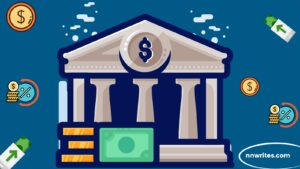Freelance Web Developer
The need for qualified web developers is at an all-time high in the current digital era. Businesses and individuals alike are looking for expert web development services to create an online presence as technology develops. Freelancing as a web developer might be an exciting career choice if you love to code and want for independence. This in-depth manual seeks to arm you with the information and direction you need to succeed as a self-employed web developer.
Step 1: Building a Solid Foundation
1.1 Sharpen Your Skills: Begin by learning the essentials of web development, such as HTML, CSS, and JavaScript. To further your knowledge, look at frameworks and libraries like as Bootstrap, React, or Angular.
1.2 Broaden your Knowledge: Stay up to speed on the newest web development trends and technology. Continuously study and explore new tools, frameworks, and languages to enhance your skills.
1.3 Create a Portfolio: Create a portfolio website to exhibit your abilities and projects. Include a selection of projects that illustrate your adaptability and expertise in many facets of web development.

Step 2: Nurturing Your Freelance Business
2.1 Define Your Market: Determine your web development strengths and interests, such as front-end envelopment, e-commerce solutions, or custom WordPress development.
2.2 Set Your Own Price: Rates should be set depending on aspects such as your experience, skill, and market demand. Investigate industry norms and adapt your rates accordingly.
2.3 Develop Professional Contracts and Proposals: Create professional contracts and proposals to safeguard your rights and clearly specify project scope, dates, deliverables, and payment conditions. For simplified contract administration, use applications like Bonsai or Proposify.
2.4 Create a Professional Brand: Establish a strong online presence by developing a well-designed website, active social media profiles, and a professional logo. Develop a reputation for producing high-quality work and providing exceptional customer service.
Step 3: Finding Clients and Marketing Your Services
3.1 Make Use of freelancing Platforms: Join respected freelancing platforms like Upwork, Freelancer, or Toptal to locate clients and bid on suitable assignments. Make an attractive profile that shows your qualifications and experience.
Attend industry events, join web development groups, and network with other freelancers, agencies, and possible clients. To broaden your network, collaborate on projects or make referrals.
3.3 Content Marketing: Start a blog or a YouTube channel to share your experience and knowledge. To establish oneself as an authority in the topic, write instructive articles, tutorials, or create video lessons. To generate organic visitors, optimize your content for search engines.
4.4 Testimonials and Reviews: Collect feedback from pleased customers and display it on your website. Positive feedback and suggestions may boost your credibility and attract new clients.
Step 4: Demonstrating Excellence in Client Communication and Project Management
4.1 Clear and quick communication: Maintain clear and timely contact with your clients. Understand their needs, offer frequent project updates, and respond to any concerns or queries as soon as possible.
4.2 Project Scope and Timeline: Define the project scope clearly and establish realistic timetables. To guarantee a seamless workflow, keep clients informed of developments and manage expectations on a regular basis.
4.3 Time and Task Management: Use project management software like Trello, Asana, or Jira to efficiently organize and monitor your activities. To stay focused and achieve deadlines, divide work into manageable milestones.
4.4 Quality Work: Strive for quality in every project you embark on. Check that your code is clean, optimized, and adheres to best practices. Thorough testing and debugging are required to create a polished final result.


Conclusion
Starting a freelance job as a web developer provides several options for advancement, freedom, and financial success. You may build a strong foundation of abilities, grow your freelancing business, acquire clients, and succeed at project management by following the methods suggested in this tutorial. Remember that success as a freelance web developer takes hard effort, ongoing learning, and a devotion to producing high-quality work.
As you grow in your freelancing career, keep honing your talents, extending your network, and staying up to current on the newest web development trends. Accept new technology and adapt to changing customer and industry demands. Improve your communication and project management abilities on a regular basis to deliver a seamless and happy experience for your clients.
Freelancing allows you to pick your projects, work with a variety of customers, and build a rewarding career on your own terms. To combat burnout, it is critical to establish a work-life balance, manage your money, and invest in self-care.
Remember that it takes time and work to start a successful freelance web development firm. Be persistent, patient, and proactive in your search for new possibilities and developing your expertise. You may thrive as a freelance web developer and have a rewarding and profitable career if you put in the effort.
So, take the leap, follow your passion, and embark on an exciting journey as a freelance web developer. The possibilities are limitless, and your skills and expertise are in high demand. Embrace the challenges, learn from experiences, and enjoy the freedom and fulfillment that come with being a successful freelance web developer.
Types of freelance web developer with detail
Certainly! The following are the many sorts of freelance web developers, along with a brief description of each:
Front-End Web Developer:
Front-end developers specialize in designing a website’s user interface and aesthetic aspects. They are fluent in HTML, CSS, and JavaScript and concentrate on creating and building client-side components with which users interact. Front-end developers make ensuring that websites look good, are responsive, and are easy to use.
Back-End Web Developer:
Back-end developers are responsible for the server-side of web development. They are in charge of developing and maintaining the server, databases, and other components that enable a website’s functioning. Back-end developers use programming languages such as PHP, Ruby, Python, or Node.js to manage databases, configure servers, and apply complicated logic.
Full-Stack Web Developer:
Full-stack developers understand both front-end and back-end programming. They have a comprehensive skill set and can handle all areas of web development, from user interface design to server-side functionality. Full-stack developers are flexible because they can work on both the client and server sides of a website, allowing them to handle complete projects on their own.
WordPress Developer:
WordPress developers are experts in the WordPress content management system (CMS). They are well-versed in WordPress themes, plugins, and customization. WordPress developers produce custom themes and plugins, as well as guarantee that WordPress websites are safe, optimized, and functioning in accordance with customer specifications.


E-commerce Developer:
E-commerce developers work on creating online storefronts and integrating e-commerce features. They are acquainted with well-known e-commerce platforms such as Shopify, Woo Commerce, Magento, and Big Commerce. E-commerce developers are in charge of activities including creating product catalogues, connecting payment gateways, building shopping carts, and assuring safe and secure online transactions.
Responsive Web Developer:
Responsive web developers create websites that adjust to and display properly across a variety of devices and screen sizes. They are knowledgeable in responsive design strategies and guarantee that websites are visually beautiful as well as functional across PCs, tablets, and mobile devices. To generate responsive layouts, responsive web developers employ CSS frameworks such as Bootstrap or Foundation.
UI/UX Designer:
The user experience and user interface design parts of web development are the focus of UI/UX designers. They have an acute sense of aesthetics, usability, and user engagement. UI/UX designers work with web developers to build interfaces that are aesthetically appealing, intuitive, and user-friendly. They do user research, develop wireframes, mockups, and maintain a consistent user experience.
Mobile App Developer:
Mobile app developers specialize in developing web apps that are optimized for mobile devices. They are knowledgeable on mobile app frameworks such as React Native and Flutter, and they can create cross-platform or native mobile applications. Mobile app developers concentrate on improving user experience and performance on mobile devices.
Remember that many categories may overlap, and many freelance web developers have talents in numerous areas. As you develop experience and skill, you can specialize in a certain field or provide a variety of services based on customer needs.











